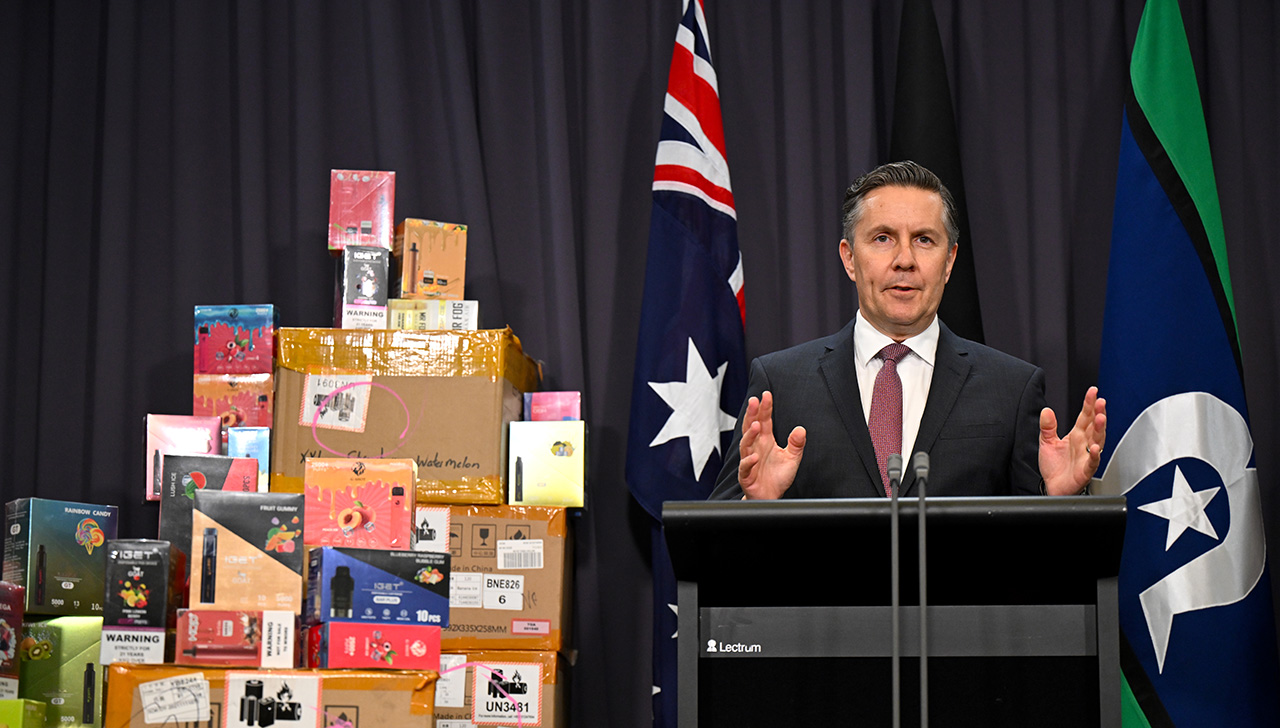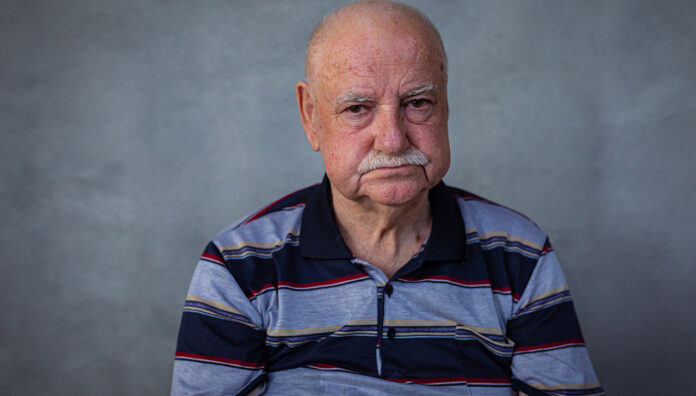With additional vaping restrictions rolling out throughout 2024, pharmacists are more likely to encounter patients seeking therapeutic vaping products.
Many of these patients will be surprised by the restrictions. Here’s how to explain the reasons behind the rules.
Timeline for the federal government’s reforms to the regulation of vapes
|
Why can’t I have a disposable vape?
The ban on the importation of disposable vapes was one of the government’s first measures to prevent vaping harms and nicotine dependence.

As most young Australians (80%) use disposable vapes, the measure is designed to protect the nation’s youth from the ‘scourge of vaping’.
The nicotine content in disposable vapes is unregulated and unknown. Although some disposable vapes purport to be nicotine free, research by the Medical Journal of Australia does not back up this claim, with 6 out of 10 non-nicotine liquids tested containing nicotine.
The nicotine content also varies, with many vapes containing 50 mg nicotine, the same as smoking 50 cigarettes.
But I want a vape that looks nicer!?
The new standards for therapeutic vapes require vaping products to be sold in plain pharmaceutical packaging. Colourful vapes will be gone.
Names such as ‘blueberry ice’ and brightly colourful packaging adorned with cartoon characters or resembling pens, highlighters and make-up are designed to entice new users, particularly young people.
Plain packaging, on the other hand, makes products less appealing and prevents display of misleading information. A 2016 review found the government’s plain packaging laws for tobacco, which came into effect on 1 December 2012, has both helped to reduce both smoking and passive smoking rates.
These prescription-only vapes taste disgusting! Why can’t I go back to the flavoured vape??
Because those flavours can be harmful, or bluntly, they’re downright dangerous. And they make vaping more appealing.
Many varieties of flavoured vapes contain chemicals such as diacetyl, which are damaging to the lungs when inhaled. Inhalation of diacetyl can lead to the development of chronic diseases such as bronchiolitis obliterans syndrome (BOS), or ‘popcorn lung’ – first detected in employees at a microwave popcorn factory who inhaled diacetyl, which flavours the salty treat.
BOS, which causes inflammation and scarring of the lungs, is a progressive disease, and can eventually lead to respiratory failure – reason enough to say goodbye to flavoured vapes for good.
The new product standard requires importers to restrict vape flavours to mint, menthol or tobacco only.
What?!?! That’s FIVE TIMES more expensive than what the corner store used to charge!!
While disposable vapes can cost as little as $10–$35, their therapeutic counterparts are significantly more expensive. Early experience suggests therapeutic vapes may cost Australians up to $150 each under the new measures.
This isn’t surprising. As unregulated (and illegal) devices, the disposable vapes sold in convenience stores and online are much much cheaper.
But this isn’t something pharmacists are able to do anything about, other than to appeal to patients to understand that products which are regulated and of verifiable quality are going to be more expensive.
The prices of therapeutic vapes are determined by the manufacturer, said Helen Stone MPS, PSA SA/NT State Manager on ABC Radio Adelaide last week.
‘There’s very little margin in there for the pharmacy, and they are not on the Pharmaceutical Benefits Scheme,’ she said. ‘It is the manufacturer’s responsibility to apply to the TGA … and it takes a lot of time and a big expense.’
But I just need some nicotine to refill the e-cigarette tank!?
Why aren’t nicotine refills available anymore? Because liquid nicotine is dangerous.
E-liquids are far from benign. They are a poisoning hazard.
Potential exposures are through rapid absorption through the skin or eyes, ingestion, or via inhalation. It can cause poisoning for children, compounding pharmacists or patients decanting the liquid.
Nicotine is toxic, potentially even fatal, and can result in seizures, cardiovascular collapse and coma.
Experience has also demonstrated that the nicotine content is typically inaccurate on vape labels.
For these reasons, from 1 March, the sale of all e-liquids – including bottled nicotine refills and pre-filled pods – became illegal in Australia without a prescription.
Pharmacists should decline requests to use nicotine liquid in compounding or repackaging on workplace safety grounds. Pharmacists should only dispense nicotine products for pulmonary delivery if they appear on the TGA’s notification list. The publication of information about other products in otherwise accepted references should not be viewed as an alternative to the TGAs notification list.
Why do I now need a prescription for my vape?
Legally, a prescription has always been required for nicotine-containing vapes in Australia. However, non-compliance with this requirement and exploitation of legal loopholes has been rife.
The government’s decision to close other supply mechanisms, including personal importation and illegal supply in convenience stores, is based on their view that risks to the health and wellbeing of children is unacceptable, and that if vaping has a therapeutic role, it should be regulated as a therapeutic good.
I’ve got a prescription. Why don’t you have any vapes in stock??
Ordering therapeutic vape products is not the same as ordering other prescription medicines, said Ms Stone.
‘They’re not a normal scheduled medicine, so there are no registered [vaping] products currently on the TGA’s [ARTG],’ she said.
If a patient presents to a pharmacy with a prescription for a therapeutic vape for the first time, Ms Stone said it’s unlikely the pharmacist will have stock on hand.
‘… because they are not coming through the normal supply routes … they may take longer to access,’ she said.
To manage expectations, Ms Stone advises patients to discuss product availability with GPs.
‘If the GP then liaises with their local community pharmacy about what brands that pharmacy might be able to access, that would be helpful,’ she said.
Vaping (probably) won’t help you QUIT
At the end of the day, vaping is not the first-line (or even second-line) treatment option for smoking cessation.
Combination nicotine replacement therapy (NRT) – whether inhalers, lozenges, sprays or patches – or varenicline, in combination with support, remains the best route for those who wish to quit smoking for good.
While patients are likely to have greater success with smoking cessation through NRT rather than therapeutic vapes, support (and more nicotine) is required to increase chances of successfully quitting.
Two forms of NRT, allowing for immediate and controlled release, means users have a continuous dose of nicotine and a method to curb cravings. Behavioural support is also required, either from a health professional or local QUIT lines.
According to the Lung Foundation Australia, patients only have a 3–5% chance of quitting unassisted. With counselling and support combined with NRT, these chances can drastically increase up to 30%.
For more information to help patients through the changes, access PSA’s Clearing the Air – Navigating the Vaping Reforms with Confidence recorded webinar.
Pharmacists can also refer to the Australian Pharmaceutical Formulary and Handbook treatment guideline ‘Nicotine replacement therapy for smoking cessation’.
*This article was updated on 1 July 2024 to reflect recently announced vaping reforms.



 Professor Margie Danchin[/caption]
Professor Margie Danchin[/caption]

 Dr Peter Tenni[/caption]
Dr Peter Tenni[/caption]
 How should we deprescribe gabapentinoids, according to the Maudsley Deprescribing Guidelines[/caption]
How should we deprescribe gabapentinoids, according to the Maudsley Deprescribing Guidelines[/caption]



 Pharmacists have always prescribed, but they have the potential to prescribe much more
Pharmacists have always prescribed, but they have the potential to prescribe much more




